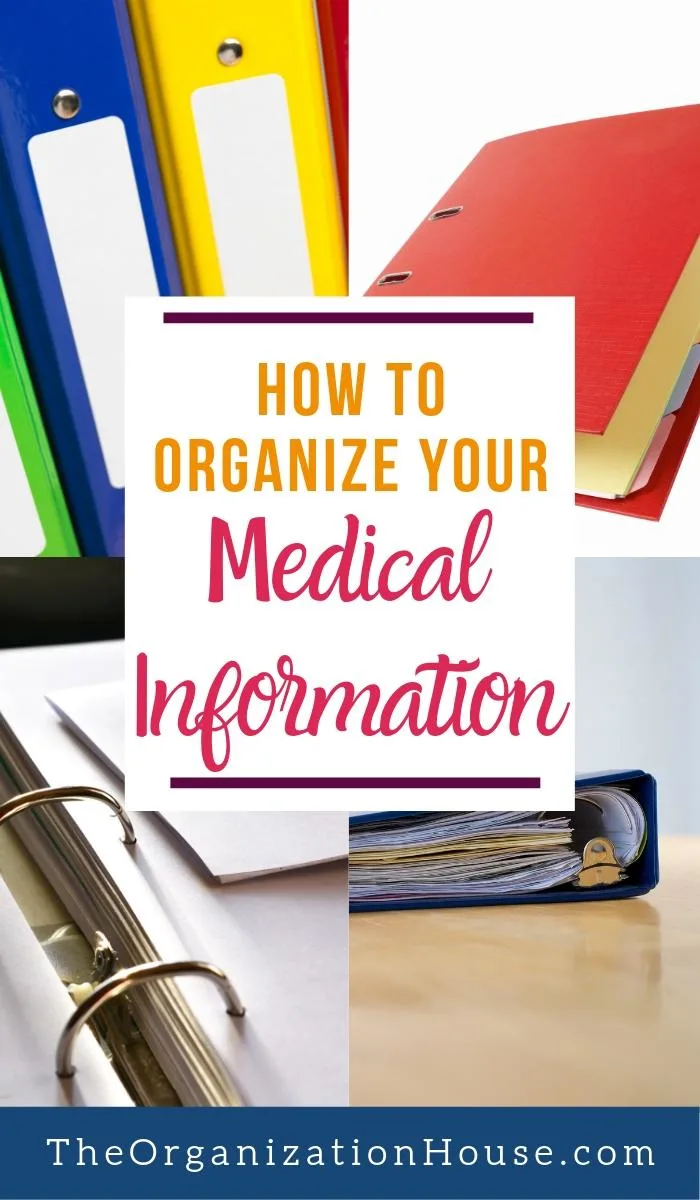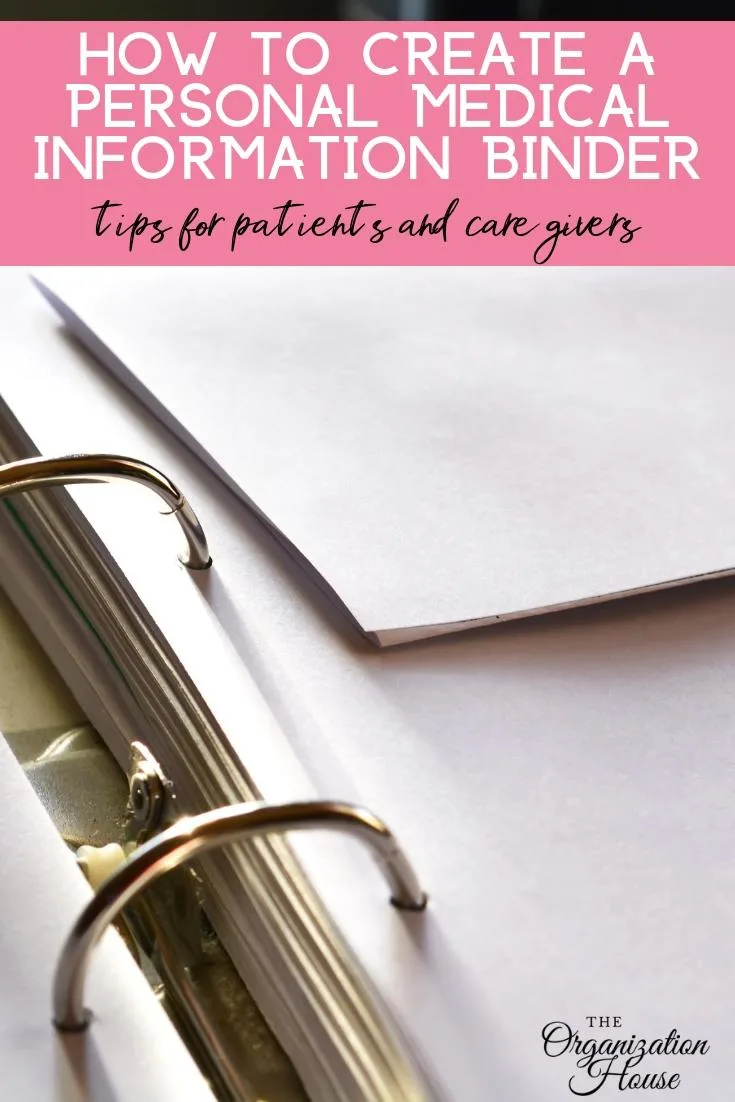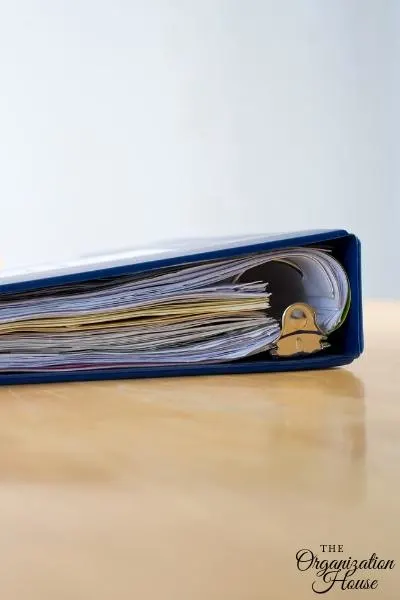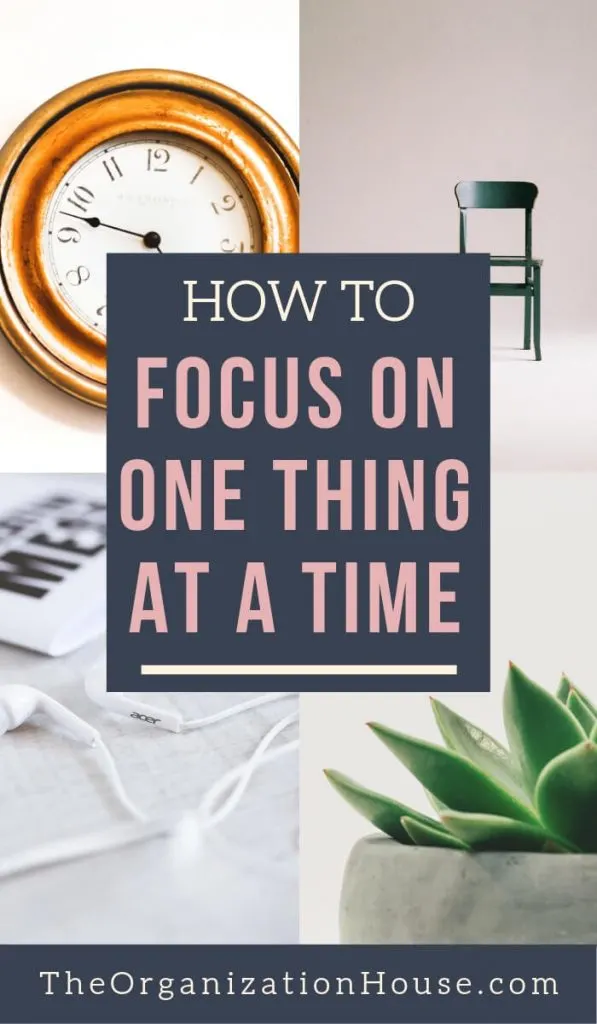Keeping your medical information organized can seem overwhelming! Learn tips for patients and caregivers on how to organize your medical information.

Caregiving Means Paperwork
One of the things they never mention about caregiving for someone who is going through an illness or needs care is that there’s a lot of paperwork. A lot of paperwork.
From receipts and notices from the doctor to prescription and treatment information, you tend to accumulate a stack of papers after each visit to the doctor or pharmacy. Since it can be, quite literally, life or death when it comes to managing that information, coming up with a system for filing and organizing your medical files is crucial.
If you’re a caregiver or are just trying to organize your own medical information, here are some tips that have worked for us in managing to keep track of all of the paperwork that’s come out way during a diagnosis. I hope it helps!

This article contains affiliate links to products that will help you get organized.
Organizing Your Medical Files
Even healthy people often see more than one doctor a year, take one or more medication, and are given one or more routine screening tests. Patients with on-going conditions such as cancer or heart disease see an overwhelming number of doctors and technicians.
To keep track of medical treatment, medications and billings, create a set of personal medical records.
Start by buying a three-ring binder with section dividers and a hole punch, and gather together whatever medical papers are on hand.
Organize Medical Information in Sections
Type a table of contents page for the front of the binder. There is no right way to organize the information, but the divisions listed below work well. Add additional sections to suit specific circumstances.
Section 1 of a Personal Medical Binder: Contact Information for Doctors and Clinics
Keep a running list of all medical service providers, including dentists, eye doctors, and clinics where lab tests are performed. At a minimum, include:
- Name and specialty
- Address
- Phone number
Section 2 of a Personal Medical Binder: Summary of Doctor Visits and Tests
Create a running list of office visits on a sheet with three columns for:
- The Date
- The Doctor’s name
- A few words about the nature of the visit
This is just a chronology of visits for easy reference. The detailed account of the visit is kept in the next section.

Section 3 of a Personal Medical Binder: Notes from the Doctor’s Visit
This section is more extensive than the summary. It is a place to record what the doctor said in detail.
If possible, take someone to the appointment who can take notes for you. If that is not possible, immediately after the office visit write a summary or ask to record what your doctor says.
We have found that recording the visit works especially well and can be referred back to as needed. It also makes it easier to write out notes about the visit after listening to the recording. You don’t need a fancy recording device – just use the Voice Memos app on your phone!
If details are foggy, call the doctor’s office for clarification. These records can be subdivided into sections by each doctor or kept chronologically.
Section 4 of a Personal Medical Binder: Copies of Medical Tests
Most doctors send copies of medical test results to their patients. If not, contact the doctor’s office and ask for a copy. Keep test results in chronological order.

Section 5 of a Personal Medical Binder: List of Prescription and Over the Counter Medications and Supplements
Create a list of all medications and update regularly. Include everything that is regularly taken. Use four columns to record:
- Date began taking the medication
- Name of the medication or supplement and the dosage (ex. Calcium 500mg. x3 per day)
- Reason for taking
- Any side effects or problems
Section 6 of a Personal Medical Binder: Billing and Insurance Papers
As insurance papers come in, collate them with the corresponding bill and mark them as paid or pending. Compare the bills against the summary of office visits to protect against billing errors.
Section 7 of a Personal Medical Binder: Family History
This section is optional, but most doctors want a family history from new patients, so having it written down prevents errors and omissions.
If you have genetic testing, be sure to write down the results or keep a copy of the paperwork in this section as well.
Section 8 of a Personal Medical Binder: Medical Articles
Medical advice is everywhere these days, but there’s no doubt that some of it is rather dubious. Keep relevant articles in this section and discuss them with your doctor.

How to Organize Your Medical Information
Make sure the binder has your name, address, phone number, and email address on it, then take the binder to all of your medical appointments. Be sure to keep it updated after each appointment. If you wait too long to update it, there’s a good chance things will be forgotten or left out.
Anyone being treated for a chronic condition should tell family members and friends about their binder, and where it is kept. In the event of a medical emergency, doctors will have access to relevant information without waiting for medical records to be forwarded.
Organizing your medical information may seem overwhelming, but once you have a system in place it’s easy to keep track of those important papers. The peace of mind that comes from doing it will help you get through any diagnosis or illness.



